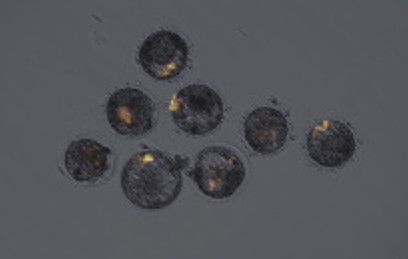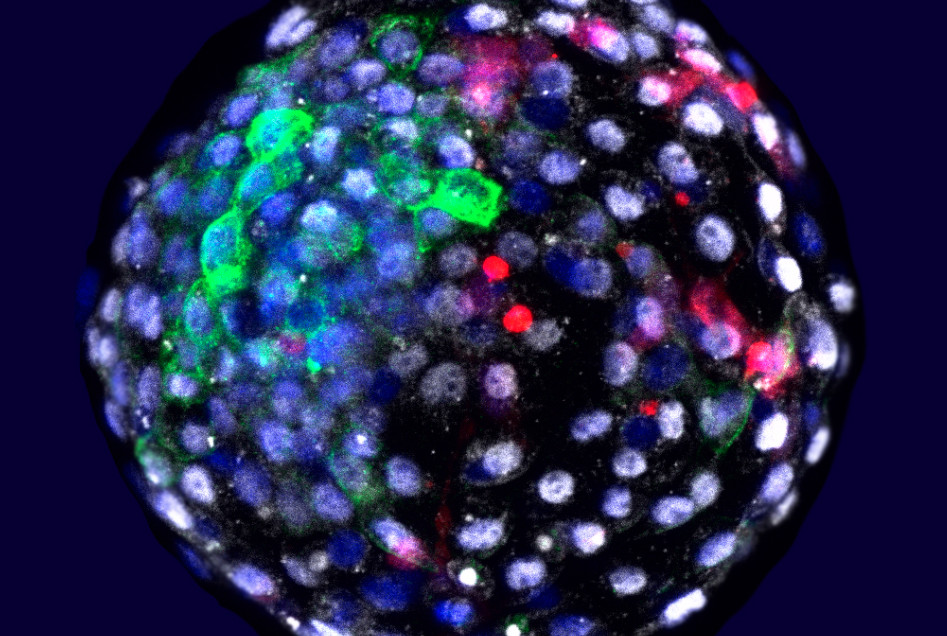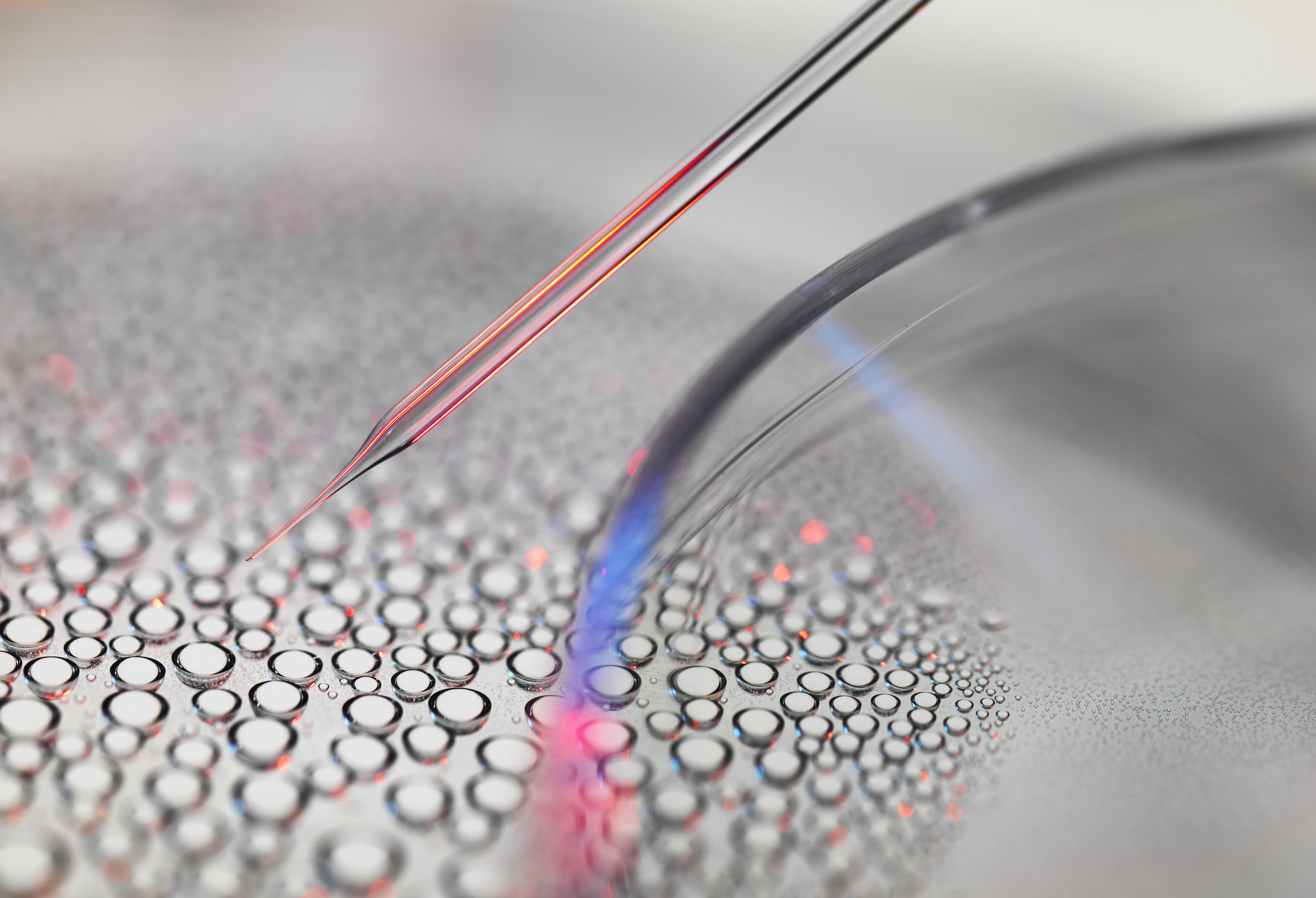
Health & Medicine
The simple, ethical case for gene editing

As scientists create human-monkey chimera embryos for the first time, the research raises the philosophical and ethical issue of moral status: how should we treat other life forms?
Published 20 April 2021
The 1968 classic Planet of the Apes tells the story of the Earth after a nuclear war destroys human civilisation. When three astronauts return to our planet after a long space voyage, they discover that humans have lost the power of verbal communication and live much like apes currently do.
Meanwhile, non-human primates have evolved speech and other human-like abilities, and are now running the earth with little regard for human life.

The astronaut George Taylor, played by Charlton Heston, is rendered temporarily mute when he is shot in the throat and captured. In one scene he is brought before the Apes, as he appears more intelligent than other humans.
He regains the power of speech, and his first words are: “Take your stinking paws off me, you damned dirty ape.”
Planet of the Apes may be fiction, but this month the world’s first human-monkey lifeforms were created by Juan Carlos Belmonte at the Salk Institute for Biological Studies in the US, using private funding. Professor Belmonte and his group injected stem cells from the skin of a human foetus into a monkey embryo.

Health & Medicine
The simple, ethical case for gene editing
This part-human lifeform is called a chimera.
If implanted into a monkey uterus, the chimera could theoretically develop into a live-born animal that has cells from both a monkey and a human.
While it has been possible to make chimeras for more than 20 years using a different technique that involves fusing the embryos of two animals together, this technique has not been used in humans. It has been used to create novel animals like the geep – a fusion of a sheep and goat embryo.
Professor Belmonte used a different technique– called “blastocyst complementation” – which is more refined. It enables greater control over the number of human cells in the chimera.
But why is this research being done?

One reason is to understand embryonic development. Another is to build new animal models to study human diseases and develop new treatments.
But the Holy Grail of this research is regenerative medicine.
Regenerative medicine has been promised ever since English biologist, Professor Ian Wilmut, cloned Dolly the Sheep in 1997. It gained further interest in 2006, when researchers discovered how to revert skin cells to a state where they can produce any cell in the body.

Sciences & Technology
The very human language of AI
Theoretically, these cells – called “induced pluripotent stem cells” – could produce organs and tissues for transplantation back into that human being. Neural tissue could replace damaged brain tissue in stroke or Parkinson’s disease, new kidneys could replace withered failing ones and so on.
And all this without needing drugs to suppress immune rejection, as the tissues are derived from that person’s own genome.
Professor Belmonte originally tried to achieve this with pig-human chimeras.
Pigs are about the same size as humans, so the organs would be suitable in size. However, few human cells survived in the embryos.

Monkeys are closer to us in evolutionary terms, which improves survival. And Professor Belmonte hopes to better understand how to develop chimeras, then transfer that understanding to create human-pig chimeras as a source of transplantable organs.
But won’t these organs have a mixture of human and non-human cells, and be rejected by the person’s immune system?
Scientists have cleverly gotten around this by using gene editing to ‘knock out’ the non-human genes for the relevant organ.

Arts & Culture
Blade Runner 2049: Identity, humanity and discrimination
The landmark research came ten years ago when Japanese researcher Dr Toshihiro Kobayashi and colleagues introduced rat stem cells into a mouse embryo that was unable to form a pancreas.
The rat-mouse chimera developed a rat pancreas.
Humans could one day receive replacement organs from human-pig chimeras. This seems like a good thing. We eat pigs for food, and experiment on them to develop medical treatments – so why not use them to generate life-saving organs?
The problem is that the chimera will have a mixture of human and non-human cells throughout their body.
This includes the brain. Modifying the brain might also modify the animal’s cognition. In one experiment, human stems cells were injected into the brains of mice, where they multiplied. The chimeric mice developed increased memory and learning ability.

We don’t know what the capacities of a human-pig chimera would be. Even if they look like a normal pig, their cognitive capacities could be affected.
In the extreme, they end up with a human-like mind trapped in a non-human body. Or they could have unique capacities unknown to humans.
This raises the philosophical issue of moral status: how should we treat other life forms?

Sciences & Technology
What are we doing to our dogs?
Philosophers often argue that there is no sharp moral line between species. What matters morally is not some biological fact (like one’s number of chromosomes), but some other property.
The early animal liberationist Jeremy Bentham, thought the capacity to suffer is what matters, saying: “The question is not, Can they reason? Nor, Can they talk? But, Can they suffer?”
The challenge for chimera research is that there is no agreed-upon account of moral status. We need to work out what properties confer a right to life, a right to not be experimented on without consent and a right to live freely.
Once the ethical standard is set, we can begin to work out how to detect whatever properties grant moral status.

So far, Professor Belmonte’s research has involved producing and destroying non-conscious embryos. There is no novel ethical challenge yet. But if producing live-born human-animal chimeras becomes feasible, we think one of two things should be done.
Firstly, the cells which cause human brain development should be knocked out through gene editing, if possible.
And secondly, the live-born chimeras should not immediately be ‘used’, instead, they are allowed to develop in social groups and are studied for their cognitive capacities and potential for non-verbal communication.

Health & Medicine
A trade in desperation: The rise of stem cell tourism
That is, their moral status should be ascertained before treating them like a normal animal. This will require agreeing on what confers moral status and finding ways to detect it. When in doubt, higher moral status should be accorded.
We also need to consider the possible role of non-human primates.
So far, blastocyst complementation has worked much better using non-human primate embryos than pig embryos. Chimpanzees, bonobos or orangutans would be about the right size for human organs. Should we consider generating organs inside of human-chimp chimeras?
This possibility calls into question our relationship with animals generally. Perhaps addressing the question of moral status and developing means to detect it will cause us to change our treatment of non-human animals.
Perhaps their moral status is closer to ours than we realise. This might be especially true of chimpanzees, who share many cognitive capacities with humans.

Is it fair to use part-human animals to meet human needs? Around one-third of disability‐adjusted life years lost in Australia are preventable through lifestyle modification. Only one in three Australians are registered donors.
We have untapped ethical ways of improving human health, but we prioritise alcohol or confectionary industries – or we are simply apathetic.
Never Let Me Go – a dystopian novel by Kazuo Ishiguru – depicts human clones being farmed for their organs. There is something similarly uncomfortable about harvesting organs from animals that are apparently not humans, but might be very close.
Of course, many people have organ failure through causes that are no one’s fault, such as genetic disorders. But there might be other ways to meet this need – like establishing compulsory organ donation after death – that don’t require us to create new animal slaves.
Chimera research has the potential to cement structural injustice against animals. We should progress with it, but attend closely to its broader context and ethical implications.
Banner: Getty Images